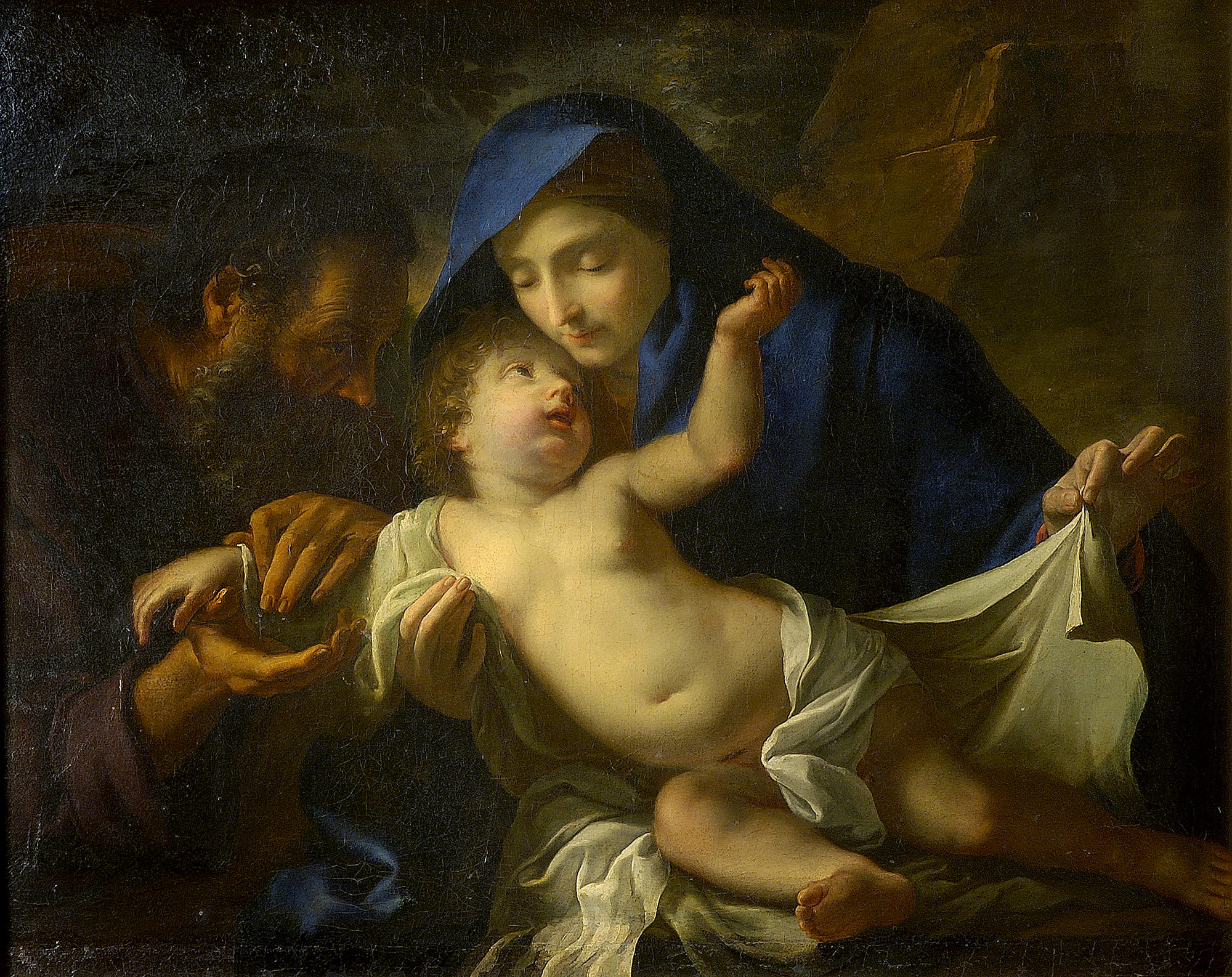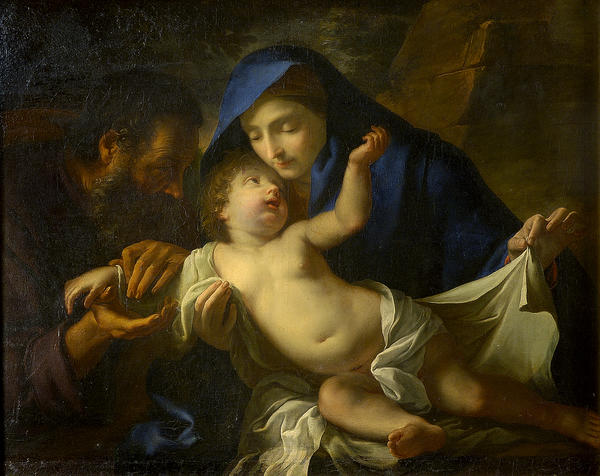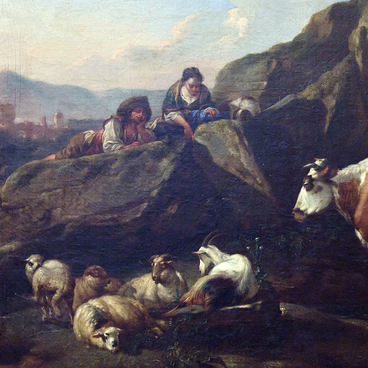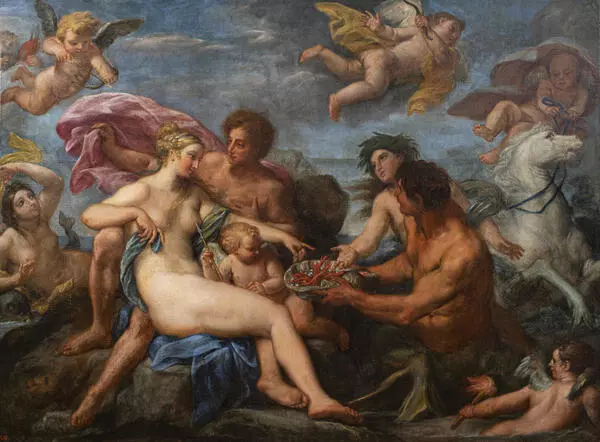The Roman artist Carlo Maratta who created the painting was nicknamed Carluccio della Madonna by contemporaries, because the main theme of his paintings was Virgin Mary and the Holy Family. A number of altarpieces by Carlo Maratta are still adorning Roman churches. In 1704, the artist was knighted by Pope Clement XI, decorated with a church order and became a court painter of the French King Louis XIV, who was captivated with the master’s art. In 1700, the artist became president of the Roman Saint Luke Academy.
Carlo Maratta painted his canvases in the academic tradition of his teacher Sacchi, originating in the work of Raphael. In addition to altar paintings for churches, the master also painted portraits, murals, and created sculptures. Portrait painting is the most interesting aspect of his art. Currently, paintings by Maratta can be seen in museums of Paris, Rome, Berlin, Florence, Saint-Petersburg, London, Madrid, Boston, Vienna, Brussels, Munich and others. Holy Family is based on the episode in the life of Christ, when Joseph and his family settled in Nazareth after returning from Egypt. First art works on this subject were created in the Renaissance.
On the right, behind Mary’s back, we see a stone structure shaped like a pyramid, that connects the theme of Holy Family with Flight into Egypt (Matthew 2: 13-15). The attribution of the art work is complicated because of subsequent corrections that distorted the original painting and were made before it entered the museum. A large area painted over with Prussian blue (Mary’s cloak), restoration corrections of the Madonna and Child’s faces, as well as the late extension at the bottom of canvas, inscribed with a fake signature, especially affect the perception of the painting.
Physical and chemical studies revealed the original painting style, technique and range of pigments characteristic of the 17th century. Stylistic analogies that can be found in C. Maratta’s work and data obtained by physical and chemical studies make it possible for us to confirm the traditional attribution. A similar picture by Maratta is included in the collection of the Louvre (Paris). Mary’s hand with dainty position of her fingers stands out. This detail, which is also found in other works by this master, apparently connects this painting by Maratta with the aesthetics of eighteenth-century classicism. In all likelihood, the painting is one of the master’s late works, as indicated by a relatively smooth painting style.




